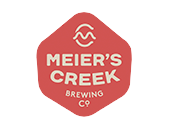Chances are you got into the brewery business because of a passion for the process and outcome of just the right brew. But, especially if you’ve been in the industry for a while, you know how important looking ahead and strategic brewery management has to be to satisfy your customers. It’s what makes a brewery production schedule such an important component of business success.
Brewery production planning can get complex quickly. You’ll even find academic analyses of the brewery scheduling process. And yet, you still have to get it right to ensure that the right brews will get to the right customers at the right time, and in the correct quantity. Efficiency is key to minimizing waste while maximizing beer quality, revenue, and customer satisfaction.
To get there, it helps to break out the brewery production scheduling process into several steps: demand forecasting, production batch sizing, production flow analysis, monitoring of your schedule, resource allocation, and quality assurance. It all starts, though, with understanding the importance and central nature of your master production schedule.
The Basics of the Master Brewery Production Schedule
The master brewery production schedule outlines the entire process that moves from ingredient ordering to final sale for all of your varieties in a given time period. It’s an overview document that everyone can refer to when they need to keep track of all that’s going on.
At its core, a master production schedule (MPS) is not actually that different across industries. The same core tenets apply, from outlining quantities of different products needed at different times to a conscious focus on the big picture rather than production details. Inputs range from your current inventory to future forecasted demand and the number of units you need to produce to keep up with that demand.
Ultimately, the master schedule is the document that all of the steps and activities in this guide will need to build up to. Keeping that in mind as you walk through the different steps outlined below will help you keep your focus on the bigger, business-spanning picture.
Breaking Your Brewery MPS into a Nuanced Production Calendar
While the MPS tends to focus on the bigger picture, it also helps to break down more nuanced production calendars and cycles. Those production cycles may include variables like:
- Product life cycles
- Seasonality of demand and offerings
- Sales trends across the year and your products
- Ingredient availability depending on the season
- And more
For example, hops can have potentially significant differences in availability and prices depending on the season. That availability will impact your calendar as you look to produce your beers at exactly the time and quantity your customers demand.
Finally, your production calendar should keep variations in product demand in mind, as well. For example high-demand brews like lagers and pale ales deserve prioritization when it comes to brewing and packaging to satisfy higher inventory needs and maximize revenue.
How Demand Forecasting Plays Into Your Production Scheduling
For your production scheduling to be successful, you have to know how much you need to produce in a given time-frame to begin with. Typically, that starts with gathering data about your past sales to inform any predictions for the future, while keeping other variables in mind as well.
For example, a moving average of your past four or five quarters can help you reasonably predict what the next quarter in beer sales might look like. Keep in mind seasonality, though; if your fourth quarters consistently outpace the other three, it stands to reason that the next fourth quarter will do the same.
Related: Tips for the Optimal Brewery Production Schedule
In addition to your previous sales, it also helps to keep other variables in mind. For example, a new craft brewery opening close to you might depress sales, while a rising economy that lifts disposable income may do the opposite. New market patterns and shifting consumer preferences can have similar effects.
Forecast your demand for both sales volume and individual units of beer sold for a fuller picture. And always keep in mind that, even with the most available data possible, demand forecasting remains an educated guess about your future sales rather than a set-in-stone certainty.
Optimizing Your Production Batch Sizing for Maximum Efficiency
Especially with rising ingredient costs, maximizing the sales and revenue impact of every batch you brew becomes a crucial consideration. Different batch sizes come with different considerations, and accounting for these variables can lead to not only great consistency but less waste and more sales, as well.
Start with a review of your equipment, and what the maximum possible batch size can be to maintain quality and consistency. Then, review the demand forecast for your different recipes to determine which of them may benefit from larger batches. Finally, make sure your recipes are optimized for the batch size you’re planning so that you can account for the differences in raw materials needed.
Typically, that means reserving your largest batches for your most popular recipes. But it also means making sure that smaller vessels are reserved for smaller batches that might still have consistent audiences. The more clearly you connect your batch sizing to your demand forecasting, the better you can schedule the production plan.
Using Production Flow Analysis to Identify Bottlenecks and Improvement Opportunities
Production flow analysis is an industrial engineering concept you can use to analyze your entire production for optimum efficiencies. That, in turn, allows you to identify any current bottlenecks in your beer production along with improvement opportunities that make your brewery production schedule more efficient.
Especially if you don’t conduct this type of analysis on a regular basis, it can take some time to set up. It starts with gathering as much quantitative information about your brewery management as possible, allowing for more objective and data-focused review of all your processes.
From there, steps like value stream mapping allow you to follow and reconcile each step your beer takes from grain to glass. Finally, it’s about taking your learnings, implementing them into the production flow, and reviewing the data again on a regular basis to determine whether improvements have led to a more efficient production process.
The Importance of Quality Assurance as Part of Your Brewery Production Schedule
Even when only considering the above steps as part of your scheduling process, it quickly gets complex. But don’t forget about another crucial part of the equation that can ultimately make or break the success of your brewery: regular quality assurance.
Put simply, you have to make sure that your output is always consistent in quality. Consumer and business customers become loyal not just because of prices, but because they begin to find their favorite brews with you over time. Imagine their disappointment if that brew suddenly changes or worsens in flavor the next time they order it.
Related: FAQs for Brewery Production Planning
Creating that consistency is only possible through regular monitoring. Focus on variables like:
- Temperature
- Timing
- Gravity
- Yeast health
- Fermentation time
- And more
Not all of this QA process has to be manual, of course. For example, consider setting up a sensory panel program that helps you keep an eye on all relevant data and information for every batch you produce. Over time your schedule can account for quality assurance to deliver consistent brew quality, every time.
Monitoring Your Production Schedule to Optimize Resource Allocation
Finally, the brewery production schedule itself also needs regular monitoring and optimization to be successful. Everything we’ve discussed above has been based primarily on forecasting data and information. It’s a great place to start, but the more you can replace those estimates with real information over time, the better.
For example, you may find that you consistently underestimate the time it takes to get a specific ingredient, or overestimate your batch size in a given quarter. Finding these trends helps you make adjustments to your production schedule going forward, ultimately maximizing your resource allocation and brewery processes for the best possible results.
Leveraging Technology for Optimum Scheduling Capabilities
Brewery production scheduling is not a simple process. In fact, it might just be the most complex planning you’ll need to do for your entire business model to function. But, with the right processes and steps in place, even this complex process can become much more straightforward and successful.
The good news is that you’re not on your own. The right technology can make all the difference in helping you build your production schedule—and making sure that schedule does everything needed to optimize your resources, efficiencies, and revenue.
Of course, technology is not a magic solution in this situation. But, especially when optimized for the brewery industry, it can be a core cog in the larger process. Ekos is proud to offer business management software tailor-made for the craft beverage industry. Schedule a demo today and learn about how Ekos can help breweries of all sizes manage their business every step of the way, from data collection to batch production, inventory management, and more.





